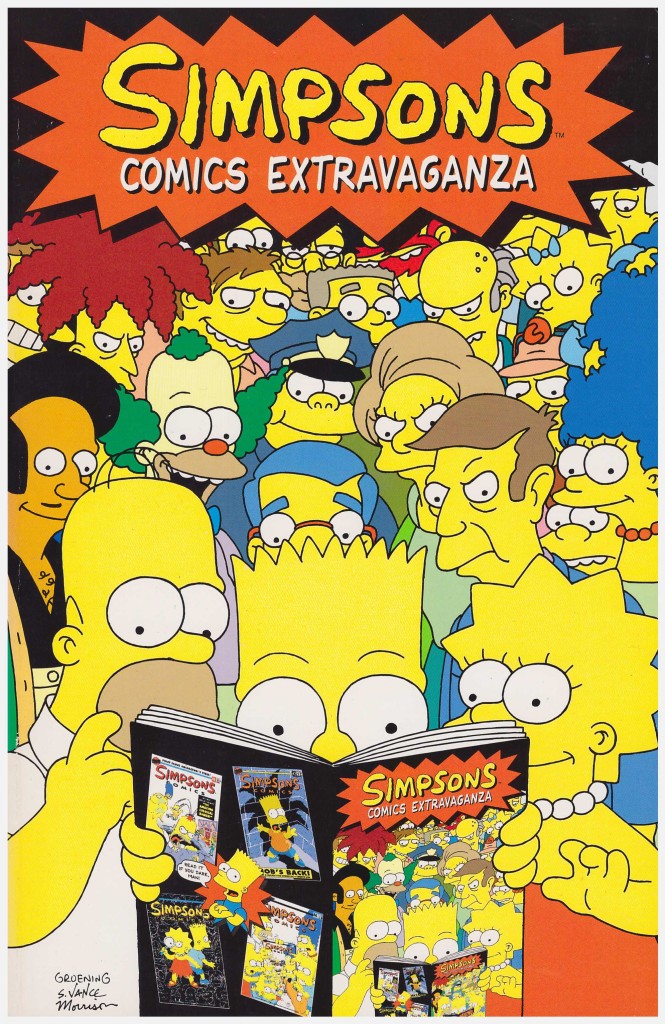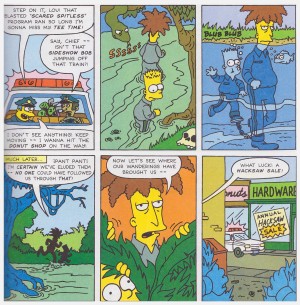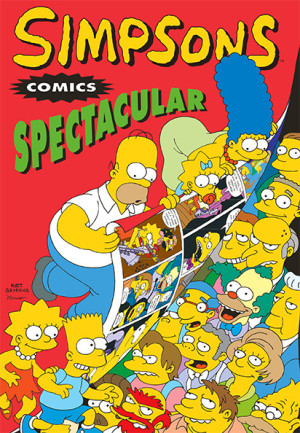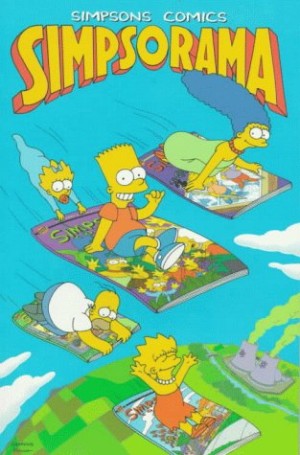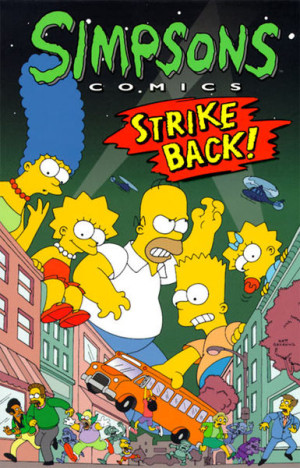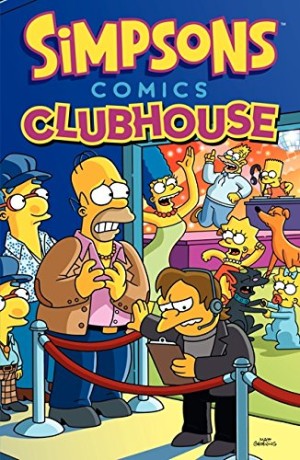Review by Karl Verhoven
There have been so many Simpsons graphic novels over the past two decades that it wouldn’t be unreasonable to assume that the earliest material reprinted here might be creators feeling their way in a new format. This isn’t the case at all. It’s extremely accomplished, well drawn and very successful in matching the tone of the TV series, which isn’t a claim that can be honestly made for a fair proportion of what’s followed this opener.
For starters, it might be gimmicky, but there’s always something pleasing about an infinity cover, with the cast looking over Bart’s shoulder as he reads a comic, the cover of which is the cast looking over Bart’s shoulder as he reads a comic.
Steve Vance is the primary creator, providing the sparkling dialogue for plots conceived with Cindy Vance, and layouts for Bill Morrison, who also writes a Marge back-up strip. Vance is extremely proficient in emulating the format of the TV show. He begins his plots, then veers off to a completely different place. He switches scenes effectively, and often drops in the brief cameo commentary joke, such as an insurance company responding to news footage of the Simpsons: “If you ever sell another policy to those Simpsons wackos you’re fired.” He spreads the net wide, incorporating the vast array of characters already available in 1996.
Best of all, though, is Vance’s verbal dexterity. You can hear Montgomery Burns cursing “All these years and what have I got to show for it? A body betrayed by time!”, and Smithers responding “and a personal fortune of 2.6 billion dollars, sir”, and Lisa claiming “But we’re Children! Each of us has an innate individuality that yearns to be respected and nurtured,” only to be told “Suppress it”. Time after time Vance pulls this off. That it’s not as simple as it might appear is borne out by this collecting the bulk of his Simpsons work, yet until Ian Boothby five years later no successor manages it as consistently, despite the use of TV writers. ‘The Amazing Colossal Homer’ won an Eisner Award in 1994.
Again, it might be considered that drawing the cartoon version of the Simpsons is relatively simple, and again that’s not the case. In the succeeding volumes not drawn by Morrison it’s only Phil Ortiz, given a credit here for assisting, who can cope with the entire cast within easily absorbed layouts.
After an opening riff on Homer’s greed and scientific experimentation, Springfield Elementary is the setting for the remaining longer tales. There’s the mystery of the missing puma mascot, the less easily disciplined kids spending a night in jail, and the combination of truancy and food poisoning requiring substitute teachers. Shorter back-ups spotlight Marge, Krusty and Otto, with a horror pastiche also featuring Homer.
Pretty well any Simpsons collection can be read without reference to the others, but those who’d prefer to follow a chronological sequence should head for Simpsons Comics Spectacular.
